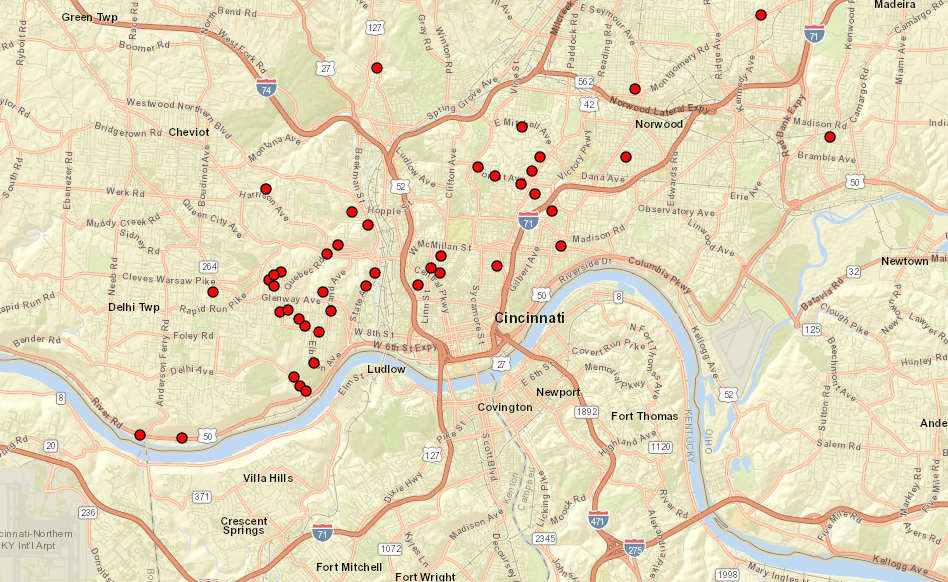An estimated 9.2 million homes and buildings in the nation get their drinking water through a lead pipe, according to EPA’s April 2023 report. The agency estimated the number of lead service lines (LSLs) in each state to arrive at the country’s total.[1]
Based on these estimates, each state was allocated a share of the almost $3 billion in state revolving fund (SRF) resources dedicated to LSL replacement in the current federal fiscal year (FY23). As explained in EDF’s blog about EPA’s announcement, two states had surprisingly high numbers: Florida with 1.2 million LSLs and Texas with 650,000.
To better understand the driving force behind the estimates, we dug into a dataset containing the majority of utility and state responses to the LSL portion of the EPA survey. This data is readily available because of a Freedom of Information Act (FOIA) submission by the Natural Resources Defense Council seeking the survey responses.[2]
First impressions
With some exceptions that we’ll address in a moment, the LSL estimates reported by states and utilities were consistent with our expectations.[3] However, we also came across significant discrepancies in three key states that prompted us to investigate further.
Overall, there are three distinct problems that need untangling and warrant attention more broadly: data entry errors, conflicting state and utility information, and inconsistent directions by the state.
To its credit, EPA recognized these issues as well and plans to offer states and utilities an opportunity to revise their survey responses this fall. Those responses will then be used to allocate the remaining $9 billion dedicated to LSL replacement in FY24, FY25, and FY26. Based on what we found for Florida and Texas alone, we may have roughly 1.6 million fewer LSLs than originally estimated – good news overall.
About EPA’s survey
Every four years, EPA conducts a voluntary survey to estimate the nation’s drinking water infrastructure needs and allocate funding provided by Congress to address these needs. In 2021, EPA conducted the 7th Drinking Water Infrastructure Needs Survey & Assessment (DWINSA), which for the first time ever included information on LSLs.[4]
EPA reports that about 75% of large and medium utilities responded to the LSL portion of the survey. State agencies coordinated collection and submission of the information to the EPA. Because of the FOIA response, we have access to what EPA described as “raw, unadjusted LSL Inventory data uploaded to the [DWINSA] Website as of October 25, 2022.”[5]
As explained in the agency’s FAQs, EPA calculated the estimated number of LSLs in each state based on the sum of two components: the number of reported LSLs and the number of “undiscovered service lines [that] might be lead”.
Texas: Data entry errors
EPA’s report placed Texas and its estimated 647,640 LSLs within the top five states with the most LSLs. Based on this, the agency allocated $146 million in FY23 to assist Texas water utilities in replacing the seemingly large number of LSLs.
However, of the 116 large and medium-sized Texas utilities included in the dataset, only three reported having lead pipes in their system.[6] By far, the City of Houston led the group at 302,359 LSLs, a figure that would have earned the number two spot among all cities across the country. The other two Texas utilities – Fort Worth and Bryan – reported less than 1,000 lead pipes each.
We contacted Houston to verify their number. They promptly explained that there was a data entry error: 302,359 should have been entered as “service lines for which the material makeup of the service line and of the connector are not known”. They added that a recent reevaluation of their data would decrease the number of service lines of an unknown material to 274,098.
With this new information and our understanding of EPA’s calculation, we estimate that Texas most likely has less than 100,000 LSLs.[7] If this is correct, the state’s allocation in FY24-26 should be reduced from $146 million to the baseline of $28 million that is allocated to any state regardless of its number of LSLs. The change would free up $118 million for other states in those fiscal years.
We do not know how many other utilities may have had similar data entry errors, but all utilities should doublecheck their survey responses when EPA provides the opportunity in the fall of 2023. We expect many utilities will have improved their estimates in preparation for the October 2024 deadline to submit service line material inventories to their state under the revised Lead and Copper Rule.
Florida: Conflicting state and utility information
Florida became the state with the most LSLs when EPA estimated it to have 1,159,300 of these pipes replacing Illinois. Based on this, EPA allocated almost $255 million LSL replacement funding to Florida in FY23. Shocked by this news, we had to find out if Florida truly deserved its newfound number one spot.
Pinellas County Utilities appeared at the top of the list of Florida utilities in EPA’s dataset[8] with 40,380 LSLs. When we reached out to the utility, they told us they reported all of their service lines as “unknown” and shared a copy of the spreadsheet they submitted to the state that confirmed this. If the number of LSLs reported in EPA’s dataset for Pinellas County was accurate, that meant almost one-third of their total service lines are lead pipes, a much higher rate than cities with a long history of LSLs.
The question remained whether there was a broader trend at play with Florida’s numbers. This prompted us to reach out to the five other large utilities that reported more than 20,000 LSLs. These utilities serve Jacksonville, Fort Lauderdale, Cocoa, Hillsborough County, and Pasco County.
We heard back from all but one and the sentiment was the same – confusion as to where the numbers in EPA’s dataset came from. Some stated that they are just now starting to inventory their service lines ahead of the October 2024 deadline, and others don’t remember responding to any survey at all. We contacted Florida DEP, the agency that oversees drinking water programs, but have not heard back.
At this stage, it is still unclear as to where the numbers for individual utilities in Florida originated, but we suspect that the state provided them. As such, we estimate that there are less than 100,000 LSLs in Florida.[9] If this is correct, its allocation for LSL replacement should be reduced from $255 million to the $28 million baseline allocation.
Ultimately, what the utilities reported to the state conflicts with what showed up in EPA’s dataset. EPA and the state should work together to figure it out. Based on the lesson learned, EPA should identify states where similar problems may have occurred.
New York: Inconsistent directions
EPA estimated that New York State has 494,007 LSLs, bringing in almost $114 million for LSL replacement in FY23.
Out of the 59 medium and large utilities[10] in New York listed in EPA’s dataset, 19 reported LSLs in their distribution area.[11] We were surprised to find that New York City was listed as “no lines reported” even though their service line material data was publicly available at the time of the survey.[12]
When asked about why they didn’t report LSLs to EPA, New York City’s water utility staff responded that they were told by the state not to provide it. The state’s SRF program manager confirmed that New York City’s LSL data was not requested so New York City could focus its efforts on getting several large infrastructure projects included in the base survey, explaining that these efforts resulted in the second largest DWINSA need increase nationally. He also noted that New York City was the only public utility they did not engage with on the LSL portion of the survey.
Based on our understanding of how EPA calculated a state’s number of LSLs and how large New York City is compared to other cities in the state, we think that EPA’s estimate for New York State may be low.[13] However, in our follow-up communications with the state, we were told that EPA’s calculations includes estimates for New York City because it is based on data for other medium and large utilities in the state. The city provided a similar message. Until we see EPA’s formula in more detail, we cannot know for sure.
Nonetheless, we encourage the state and New York City to update their reporting and to provide an opportunity for other utilities to update their DWINSA responses.
Summary
We thank NRDC for submitting the FOIA request and EPA for making it publicly available. The information allowed us to look more closely at the surprises in EPA’s LSL estimates.
We also applaud EPA for its willingness to give states and utilities the opportunity to update the LSL information. We anticipate that this will enable a fairer allocation of the funding dedicated to LSL replacement to states based on their need.
We recognize that the problems found here may not be unusual for any survey seeking previously undisclosed information, especially since some of the parties did not understand that the information would affect each state’s share of the $15 billion in funding dedicated to LSL replacement.
[1] EPA’s estimate of 9.2 million LSLs includes service lines that are classified as “galvanized requiring replacement” but excludes 2.8 million standalone galvanized pipes. See page 6 of the EPA’s 7th DWINSA Fact Sheet for service line category definitions.
[2] We focused on the last file uploaded by EPA on November 7, 2022 named “EPA-2022-003617 Responsive Document Batch 6” and tab labelled “State Med-Large Data”.
[3] Based on a 2016 American Water Works Association (AWWA) Survey of LSL estimates.
[4] In 2017, Congress directed EPA to collect information on LSLs as part of the DWINSA in America’s Water Infrastructure Act (AWIA) of 2018 (P.L. 115-270).
[5] See file from FOIA response named “EPA-2022-003617 Responsive Document Batch 6” and tab labelled “Data Caveats”.
[6] EPA assigned each utility’s response (see Column E: Status) to one of four categories. Out of the 116 large and medium sized Texas utilities in the dataset, 59 utilities reported 0 lines. The remaining reported at least 1 line under the following categories: 4 all unknown, 37 no unknown, 16 some unknown.
[7] EPA’s estimate of 647,620 LSLs in Texas means that 5% of all of the service lines in the state are lead. If the number drops to less than 100,000, that translates to only 0.7% of all service lines in the state being made of lead.
[8] EPA assigned each utility’s response (see Column E: Status) to one of four categories. Out of the 85 large and medium Florida utilities in the dataset, 18 utilities reported 0 lines. The remaining reported at least 1 line under the following categories: 1 all unknown, 4 no unknown, 63 some unknown.
[9] EPA’s estimate of 1,159,300 LSLs in Florida means that 17% of all of the service lines in the state are lead. If the number drops to less than 100,000, that translates to only 1.5% of all service lines in the state being made of lead.
[10] New York State told us that 5 of the 59 utilities were removed from the state’s sample after the DWINSA data collection began.
[11] EPA assigned each utility’s response (see Column E: Status) to one of four categories. Out of the 59 large and medium-sized New York utilities in the dataset, 15 utilities reported 0 lines. The remaining reported at least 1 line under the following categories: 11 all unknown, 18 no unknown, 17 some unknown.
[12] In 2021, EDF downloaded New York City’s service line inventory from their OpenData website, showing 62,770 potential lead service lines and 126,395 service lines of unknown material. New York City told us in a June 2023 email that it reported 137,542 potential LSLs and 230,870 service lines of unknown material in 2021.
[13] EPA’s estimate of 494,007 LSLs in New York means that 14% of all of the service lines in the state are lead. If the number increases by at least 100,000 to include New York City, that translates to 17% of all service lines in the state being made of lead.














